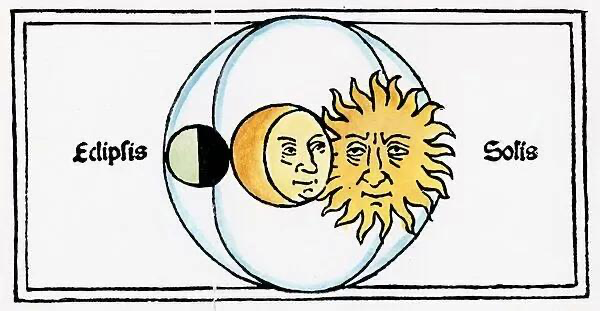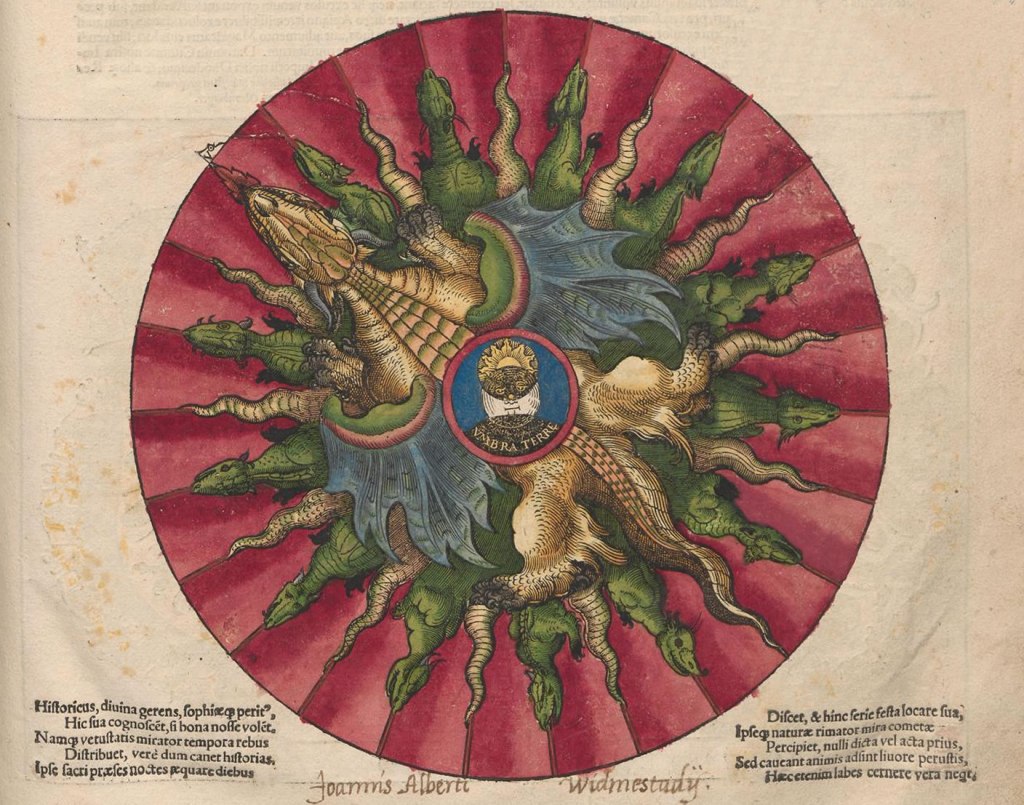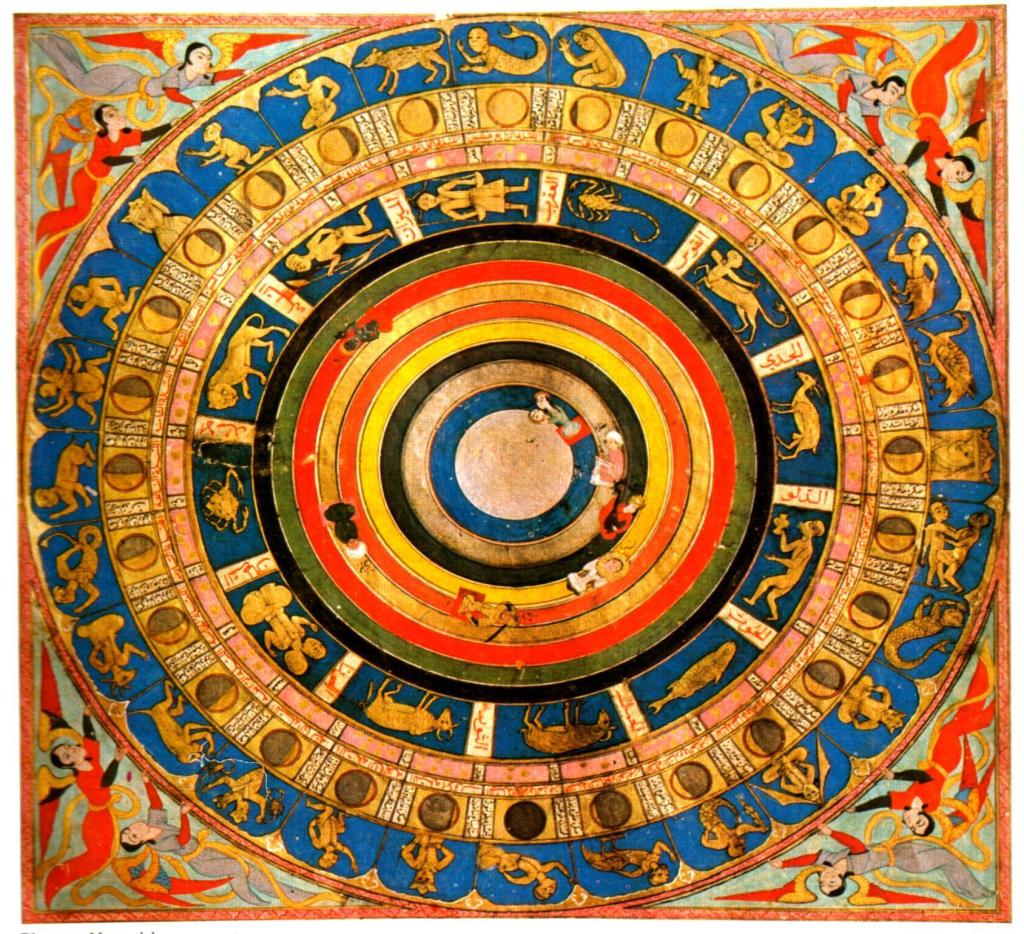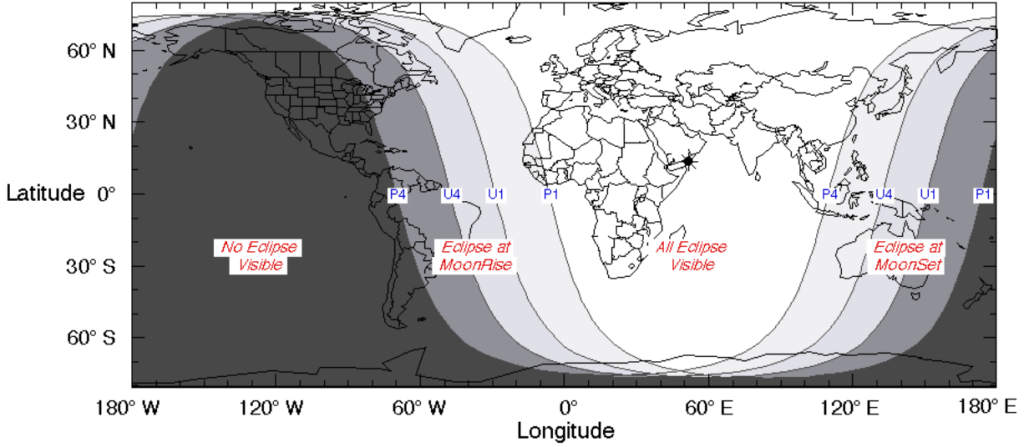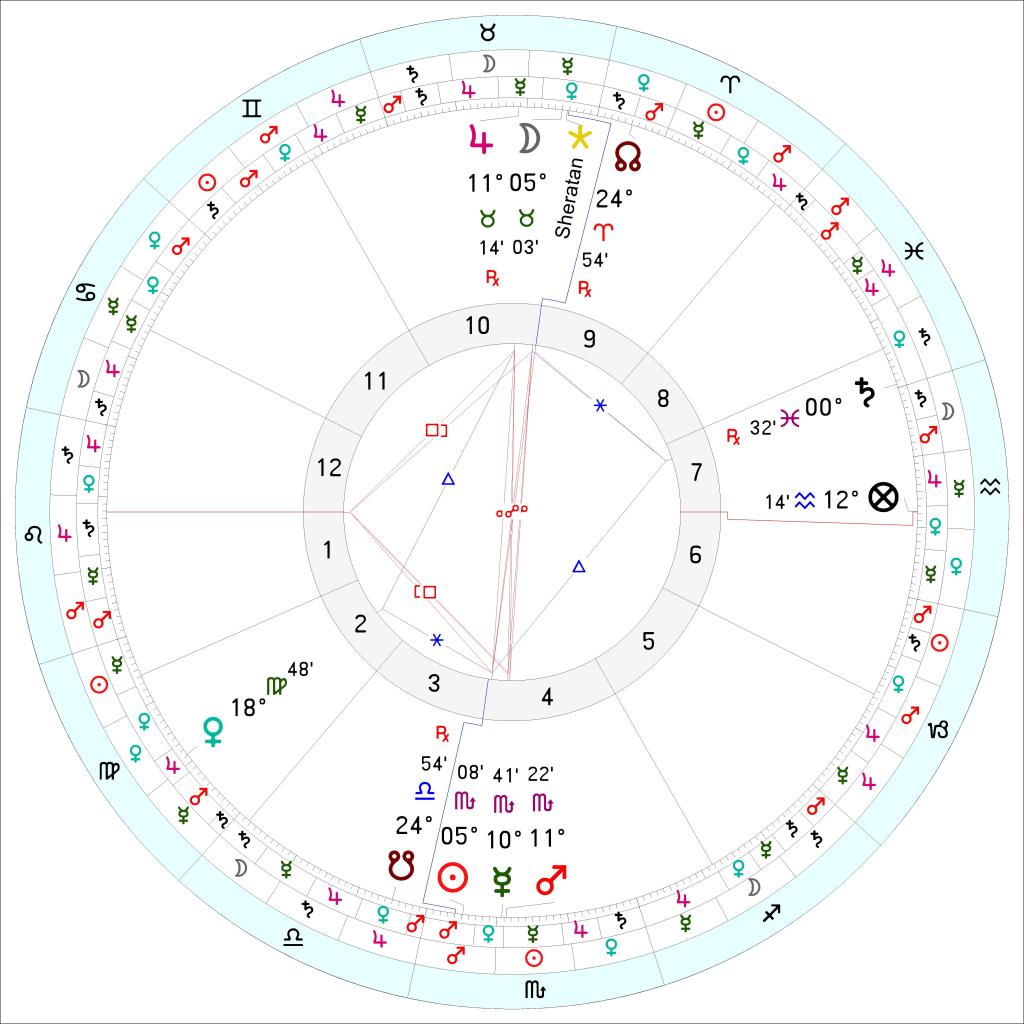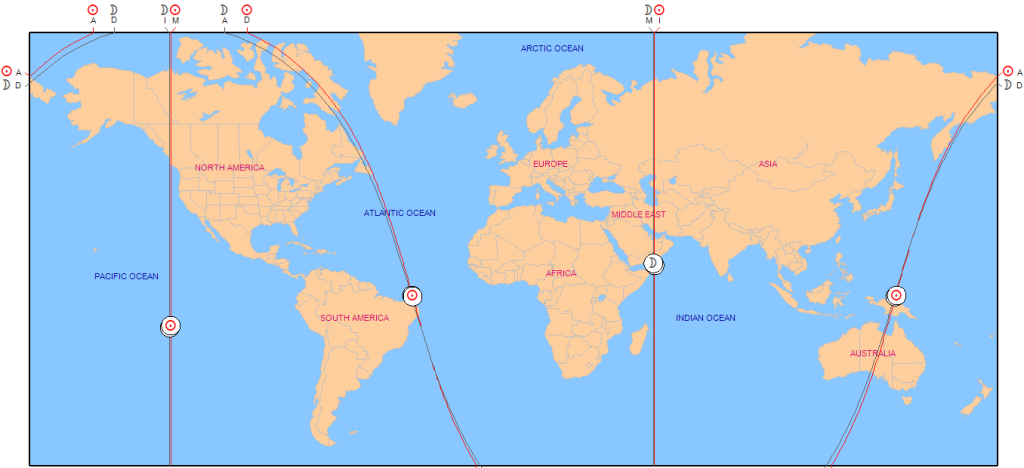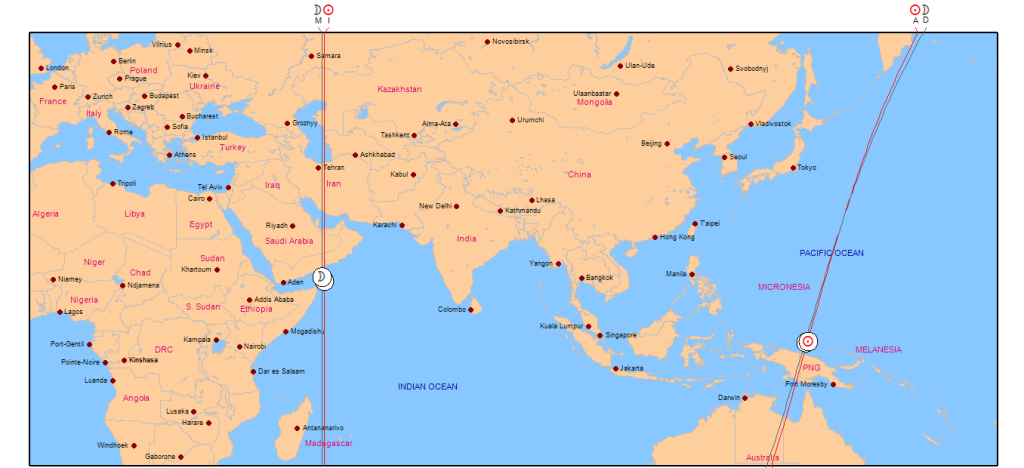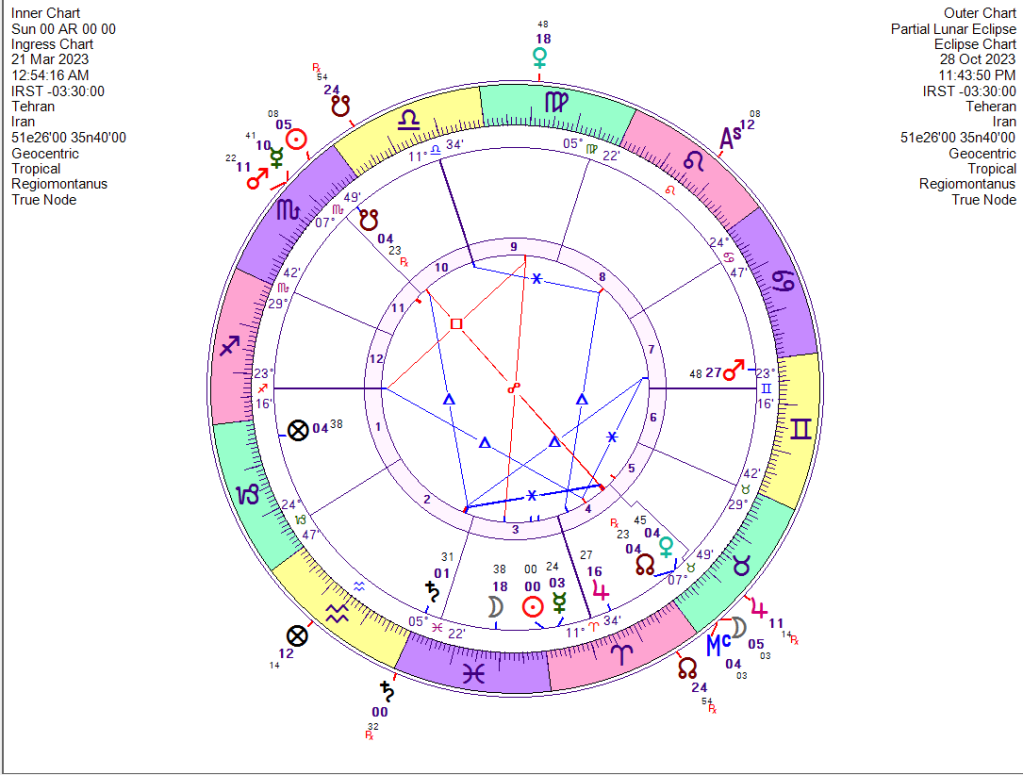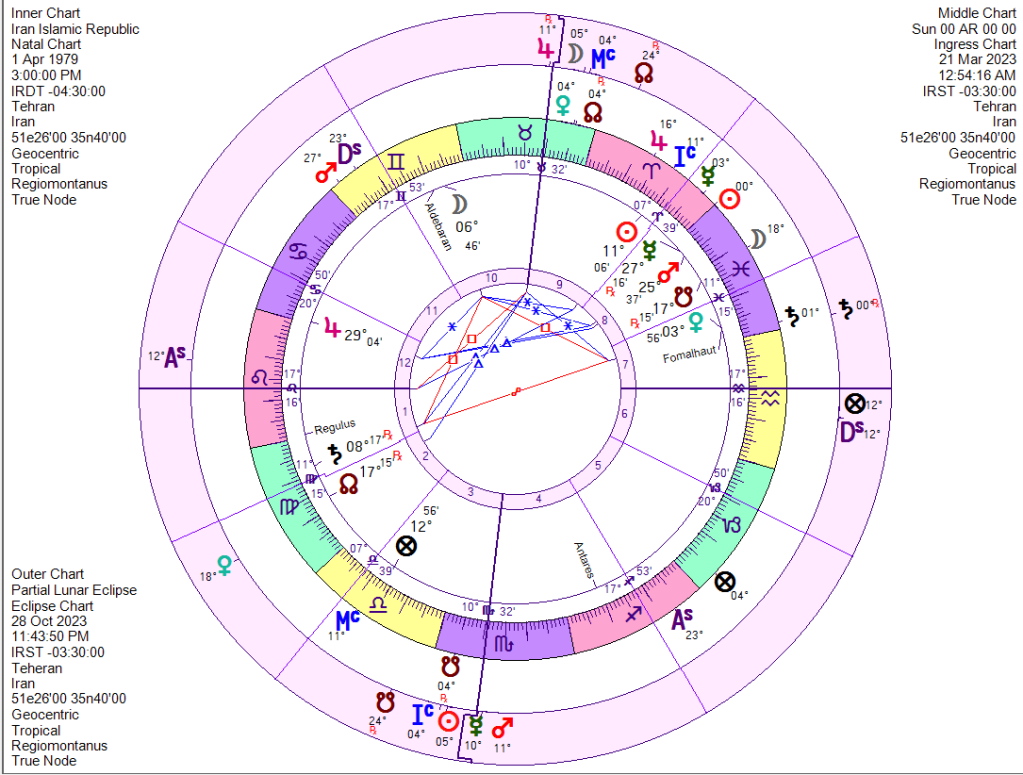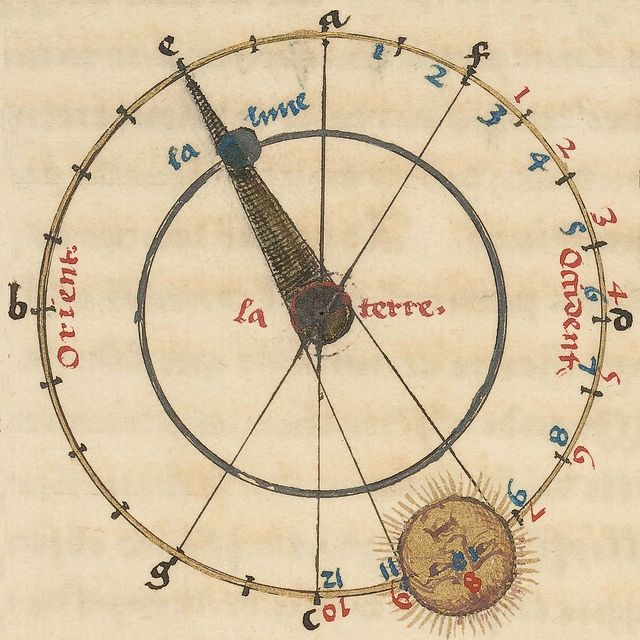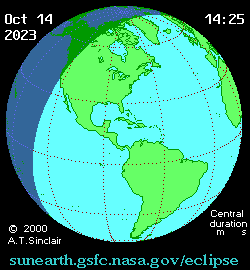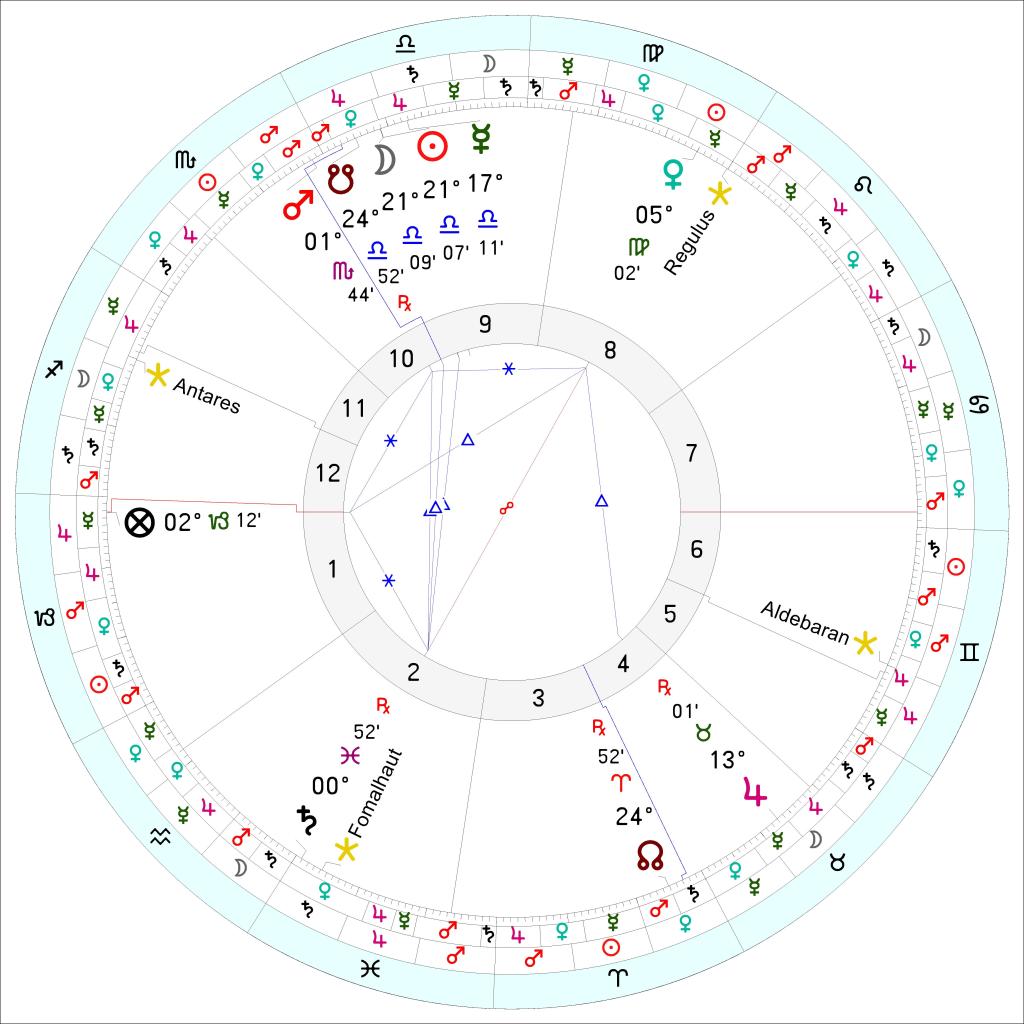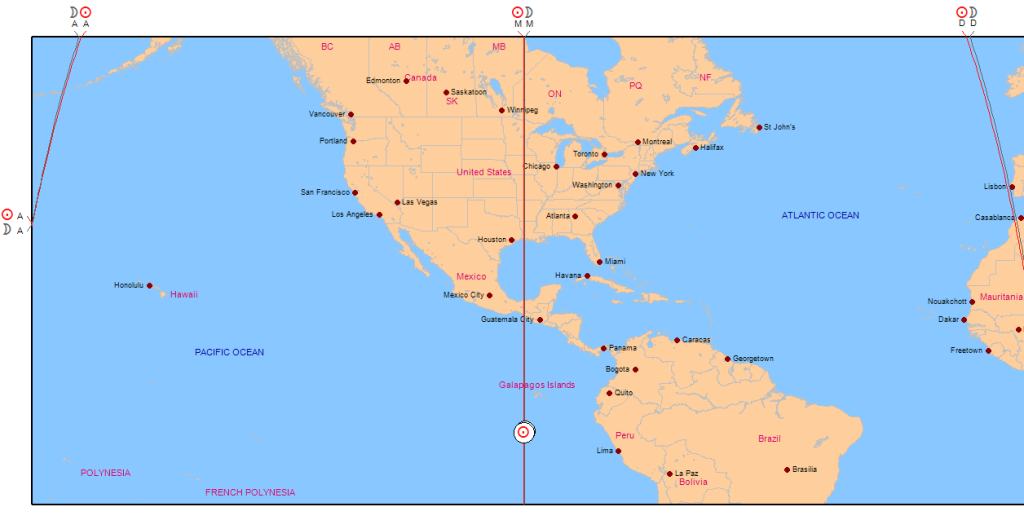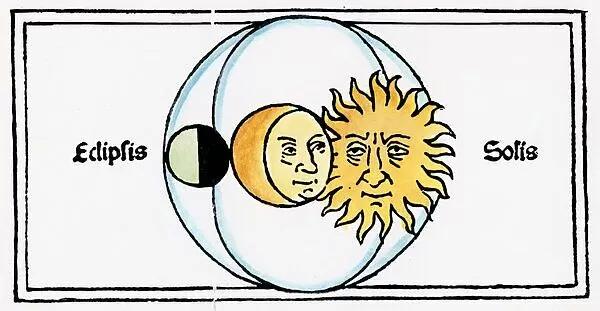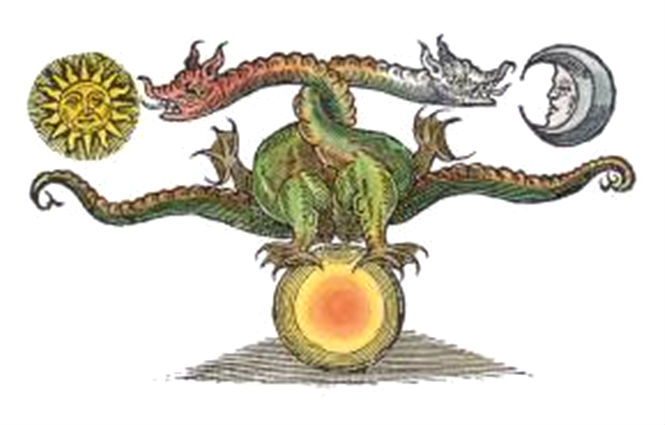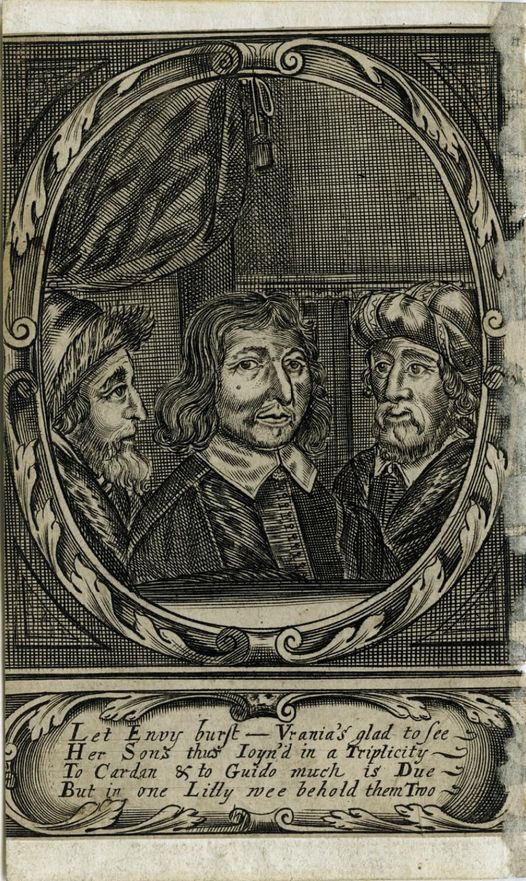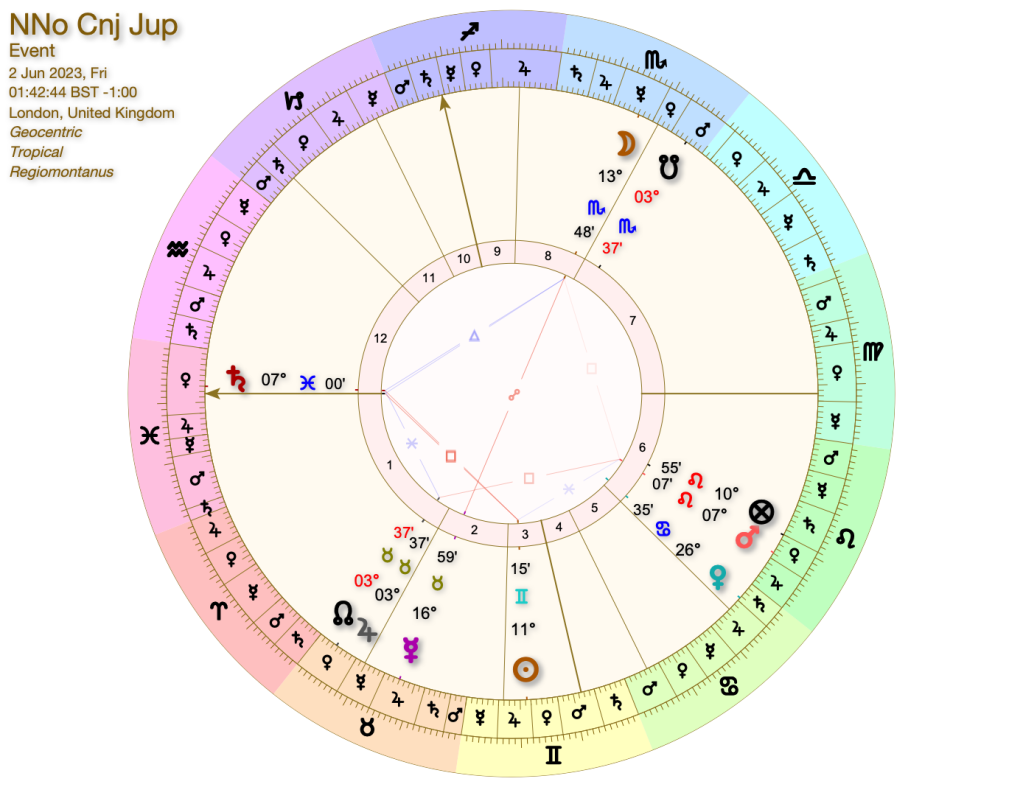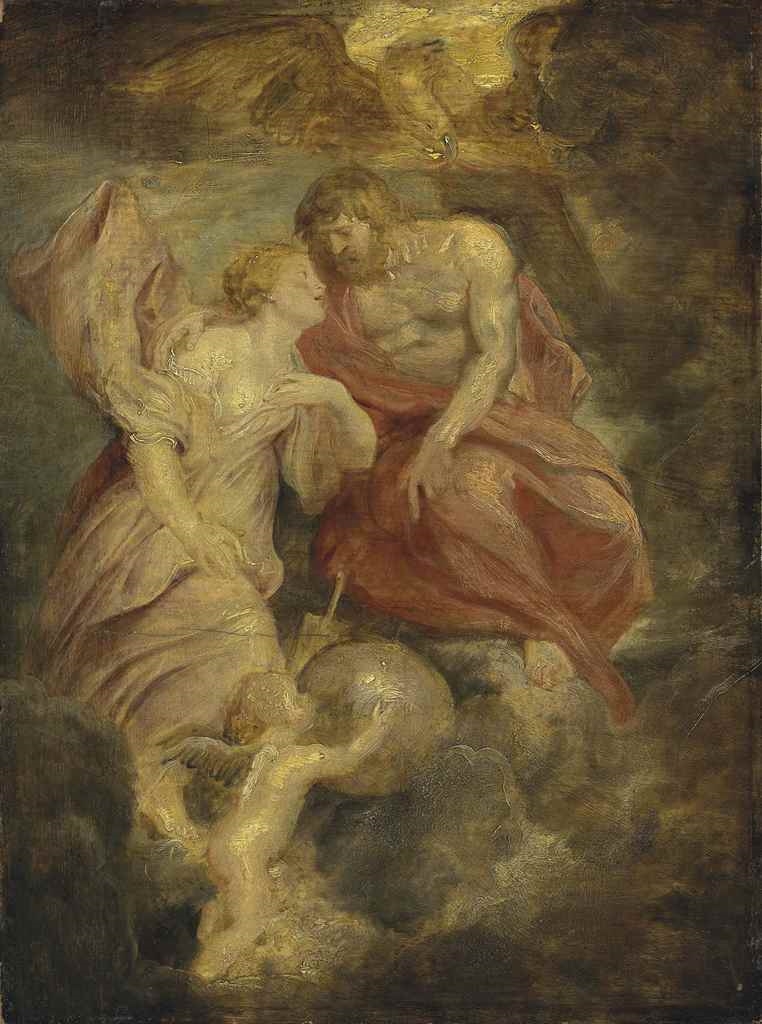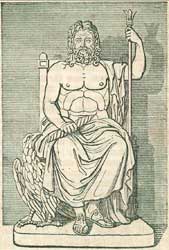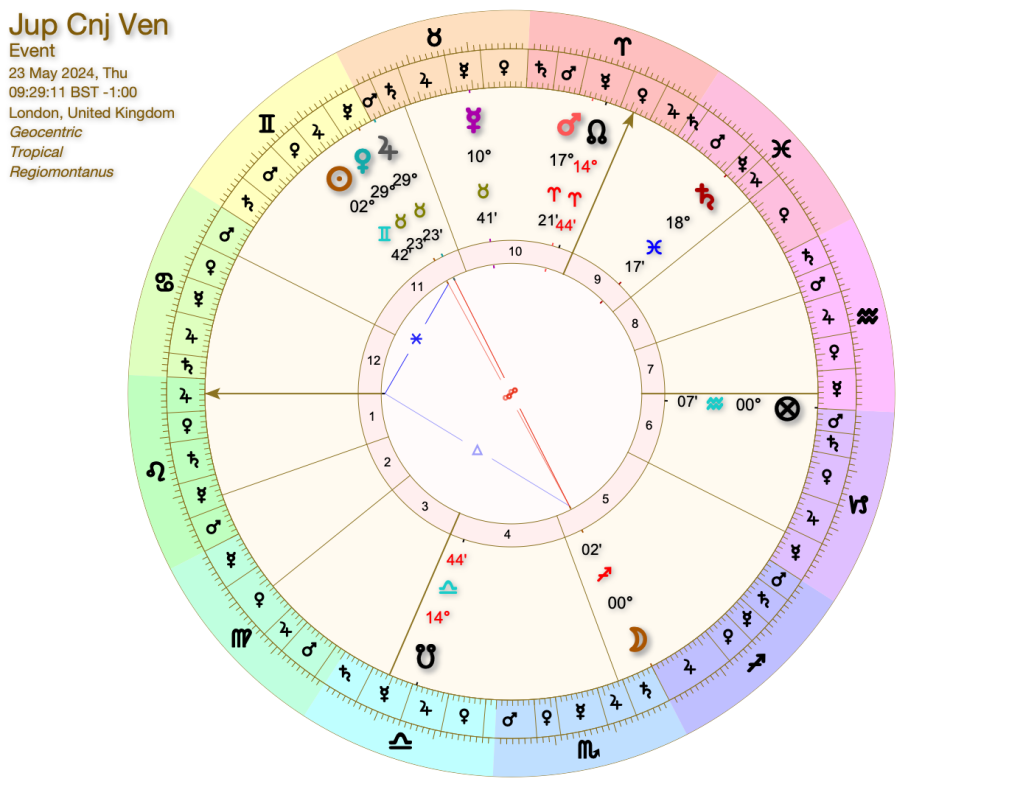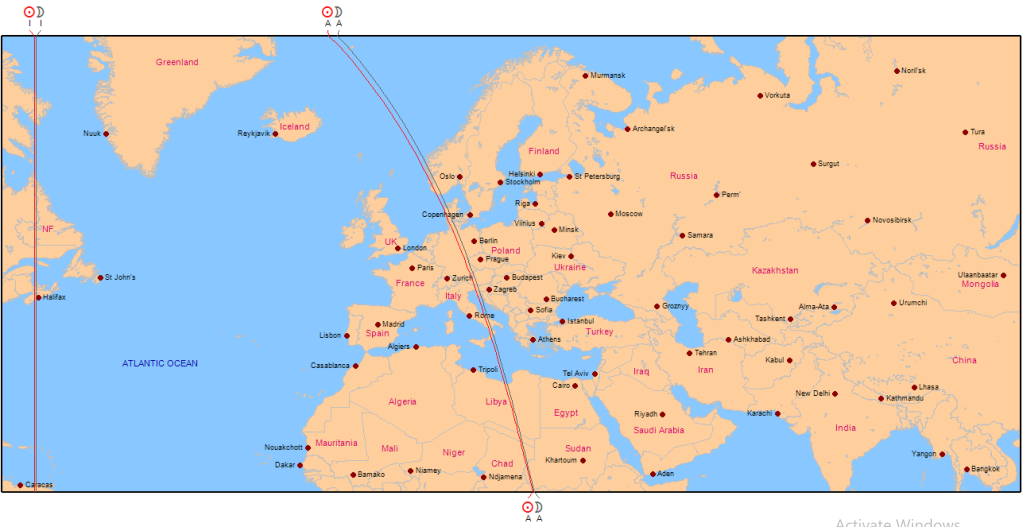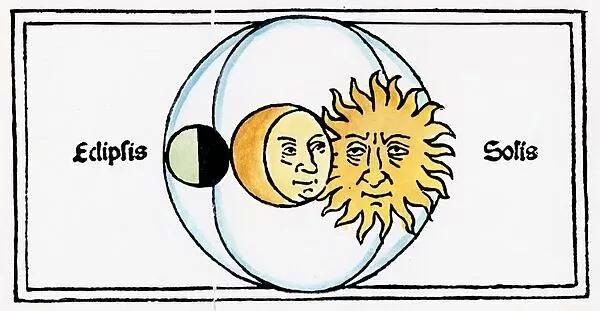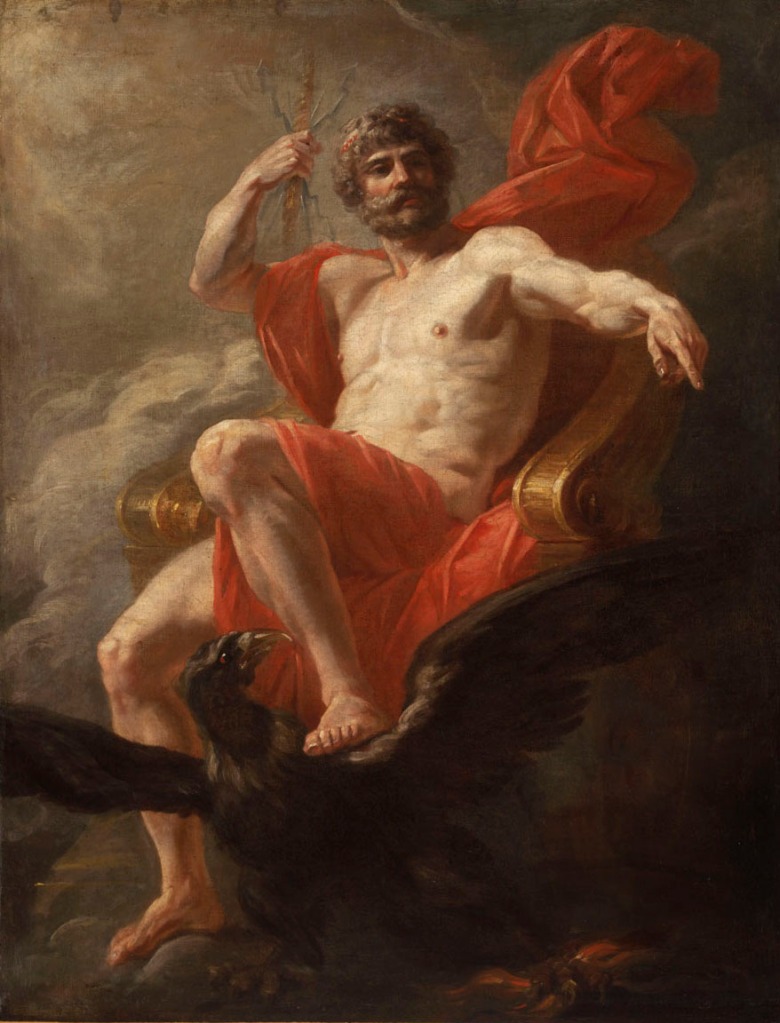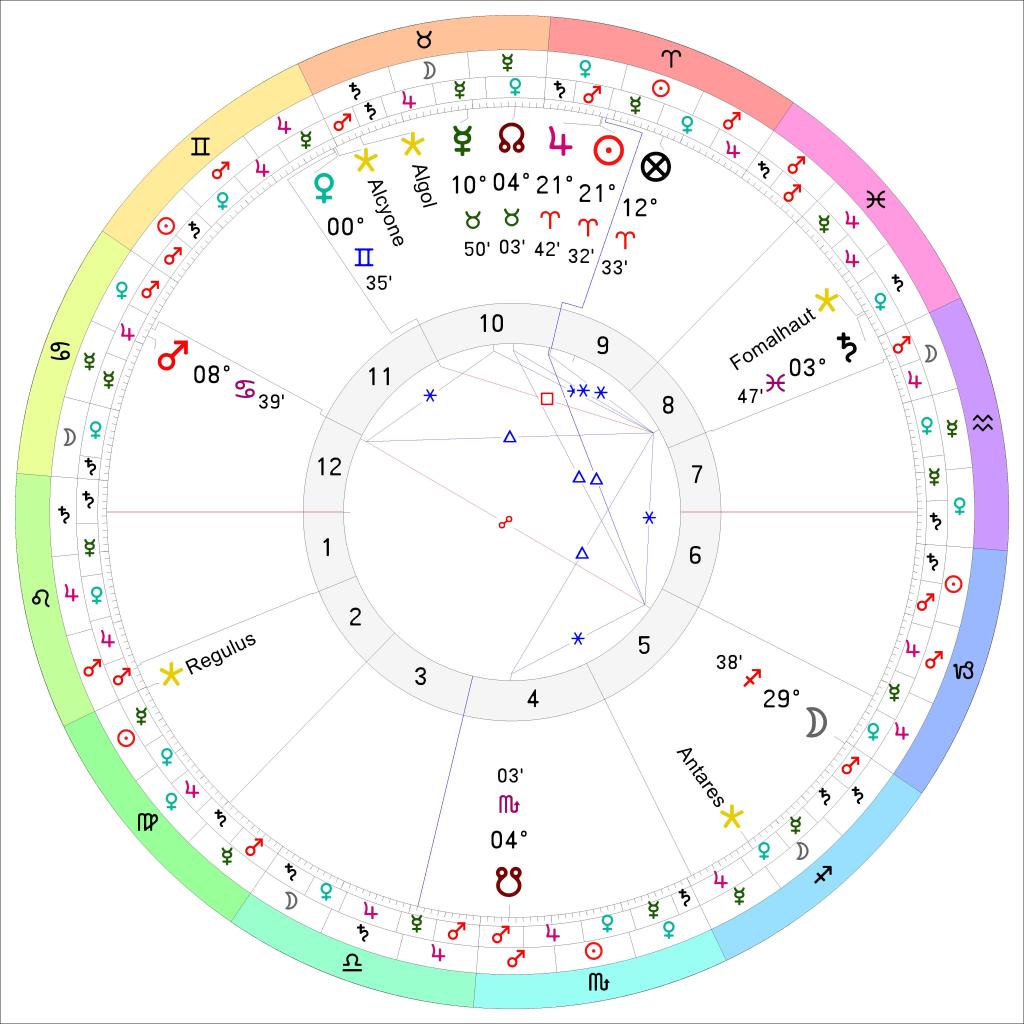On 8 April 2024, at 18:17 UT, there will be a total solar eclipse. The duration of the maximum eclipse will be 4 min 28 sec, the global duration 5 hours 10 minutes. The totality of the eclipse will be visible in North America, beginning at the Pacific coast, then ascending through Mexico, the United States, and Canada. The eclipse will be partially visible in Norway, Iceland, Ireland, western parts of Great Britain, north-west parts of Spain and Portugal, the Azores, and Canary Islands, and in all Central American countries, as well as northern Colombia.
This eclipse is the third of three notable solar eclipses which can be seen from within the USA. The eclipse follows the ’Great American‘ Eclipse’ of August 2017 (see my article, here) the annular solar eclipse of October 2023 (see my article, here) and is known as the ‘Great North-American Eclipse‘.
The chart, cast for Houston, Texas, shows the event:
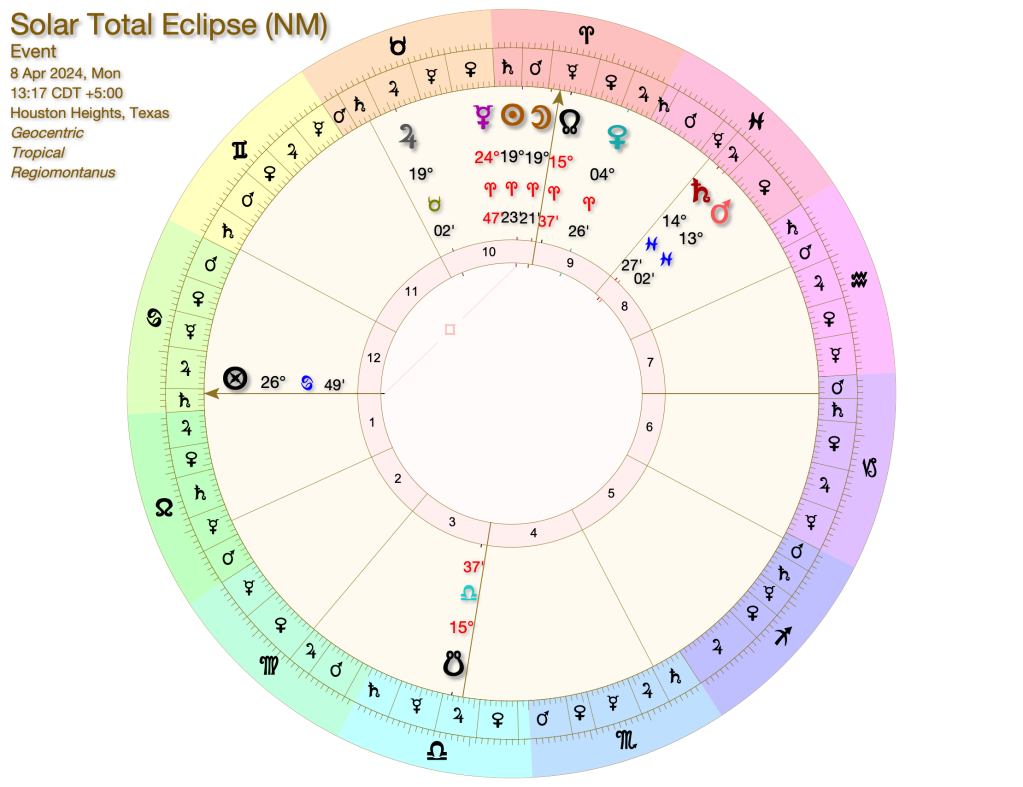
Before we will discuss any possible effects on the individual, we have a look at the mundane astrological implications of this eclipse. To be able to do this, we need to establish where the eclipse is likely to have its greatest effect. For this purpose we need to look at the countries falling under the rulership of Aries, the sign wherein the eclipsed Sun resides during the event. We also have to take into consideration that the eclipse’s visibility will greatly enhance its effect. Looking through traditional source material, we find that, according to William Lilly, Germany, Italy, Sweden, Poland, Burgundy, France, England, Denmark, Upper Silesia (a historical region of Central Europe that lies mostly within Poland, with small parts in the Czech Republic and Germany), Judea (now part of Palestine and Israel), and Syria are the locations traditionally thought to fall under the rulership of Aries.
Next, we have a look at a map showing the path of total visibility, which stretches right across the USA.
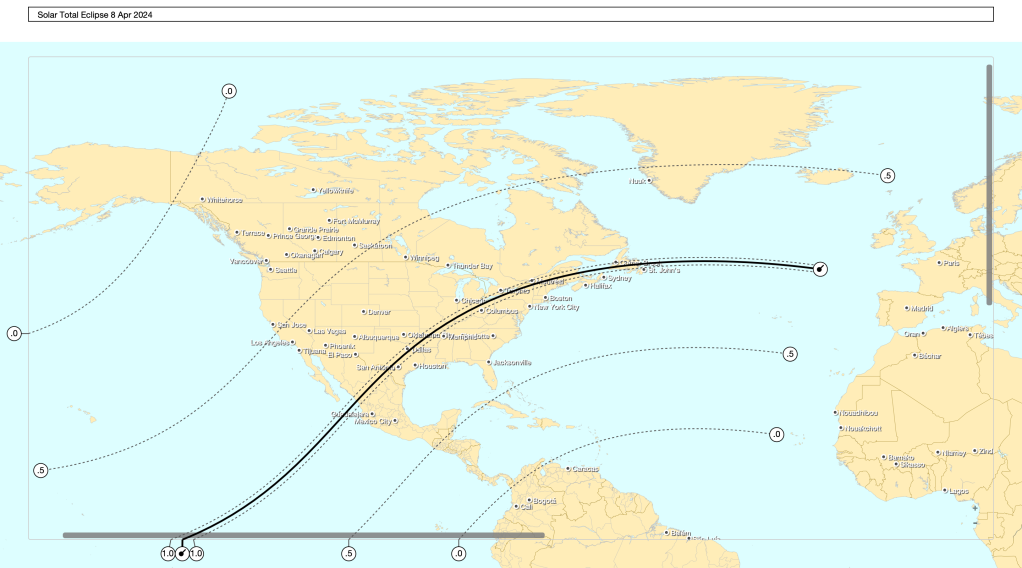
The map below shows the eclipse’s path of angularity:
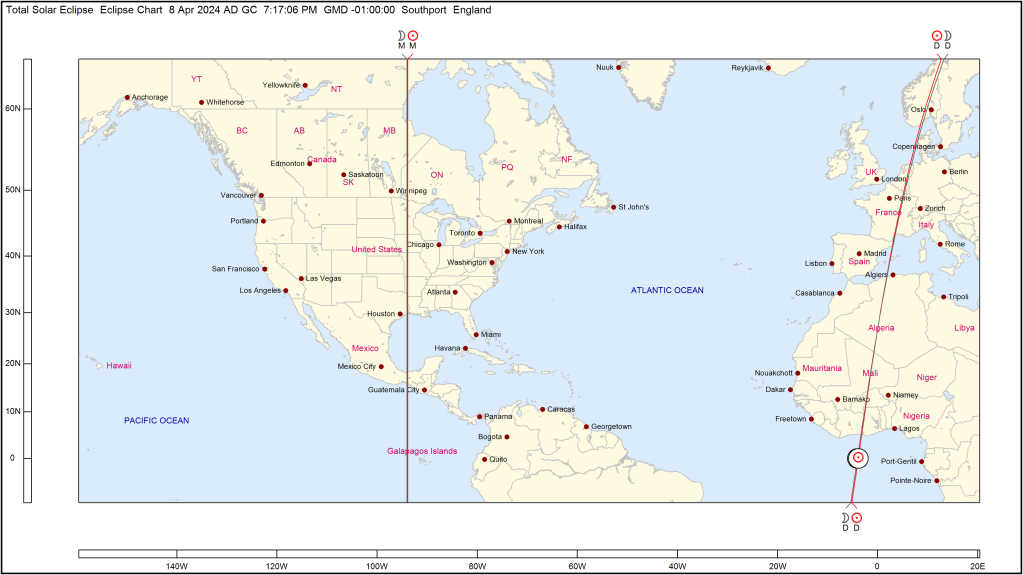
What becomes apparent is the fact that France, which falls under the rulership of Aries, has the eclipse point tightly conjunct the Midheaven, suggesting a strong impact. Also, people in the USA and Mexico are likely to be particularly affected by this eclipse.
The Sun is placed in the second decanate of Aries, ruled by the Sun. Therefore we have to look at Mars as eclipse ruler. William Lilly writes in his Annus Tenebrous, that this placement:
“… brings some King, Prince, or eminent officer to Prison or restraint of Liberty, it adds sorrow and danger of Death onto him, destruction of bearing fruit trees, and it portends to the rottenness or putrefaction of such things as the earth produces, whereby both man and beast are afflicted”.
Lilly also writes that Mars as sole eclipse ruler stirs up wars, seditions, and tumults. In some cases, it can indicate the onset of acute diseases, infirmities by breaking or stretching the veins. He states that the rulership of Mars inclines rulers and influential people unto tyranny, violence, injuries, and injustice. There is also the possibility of sudden storms, and violent shipwrecks. This eclipse can also excite men’s minds to great rashness and fool-hardiness.
In the recent past, there were two solar eclipses in 19* Aries. The first one was in April 1986 and the second took place in April 2005. People with natal placements in or around 19* Aries, who had noteworthy experiences in 2005 or 1986 may expect similar events to happen.
Generally speaking, an eclipse usually affects only a small number of people. To establish the possibility of any effect to take place, the birth chart should be scrutinised for any of the following:
- Sun or Moon are in or around 19* Aries, or around 19* Libra
- Sun or Moon are in or around 19* Cancer or 19* Capricorn (square)
- 19* Aries is culminating in the birth chart (conjunct Midheaven)
- 19* Aries is ascending in the birth chart (conjunct Ascendant)
Should it be the case that one or even more of these factors apply, an in-depth reading of the birth chart may be necessary to find out if, how, and to what extent the native could be affected.
(Peter Apian, “Astronomicum Caesareum”, Ingolstadt, 1540)
